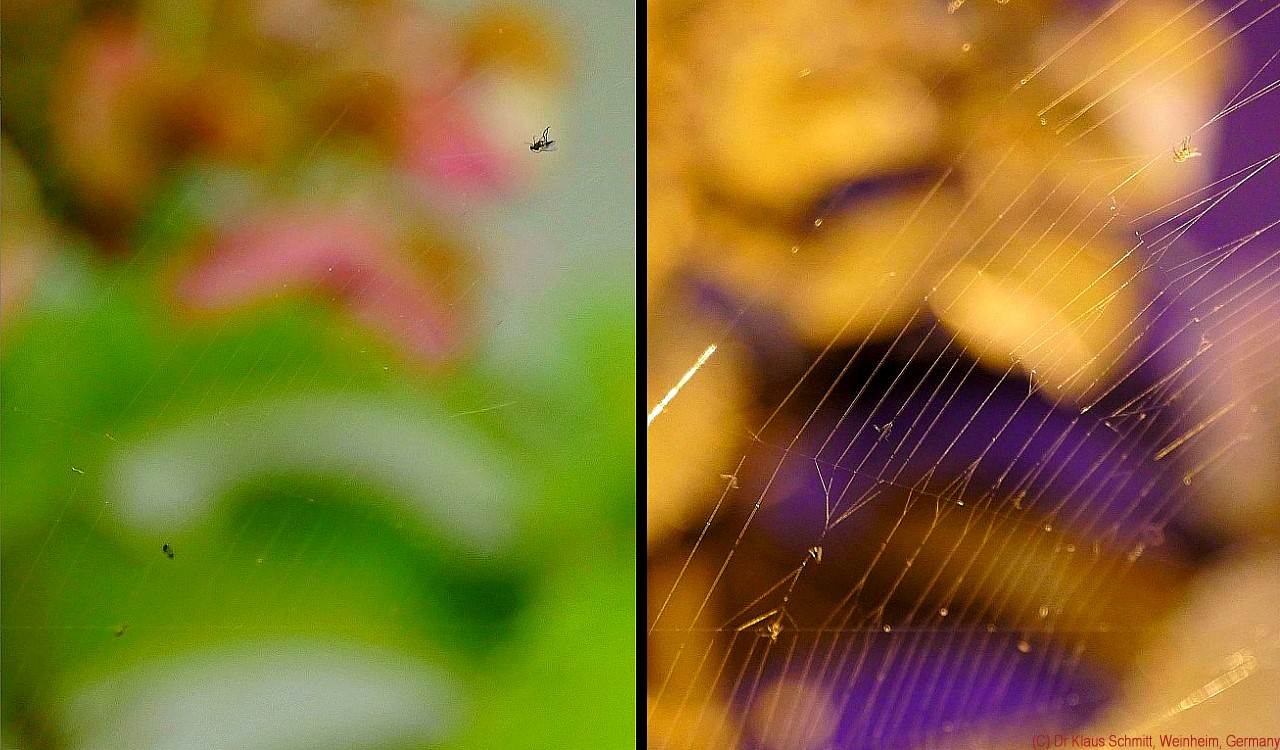Dr Klaus Schmitt
Well-known member

left human vision, right reflected UV

Klaus,
left human vision, right reflected UV
Jerome,So spiderwebs reflect UV. That is shown in your picture. What the picture does not show is whether a web which would not reflect UV would attract less preys.
I don't have to, it has been published here: https://www.researchgate.net/publication/232692128_Ultraviolet_reflectance_of_spiders_and_their_webs and my interest was to see if I could prove that....
In terms of existential benefit, being a warning to birds would be immediately life-saving to the spider.As a chemist I can't help feeling the UV reflectance could be to prevent the silk strands decomposing...
UV is detrimental to many polymers, & a web that's weakened won't feed the spider.

Valid points but the protection from birds seemed to be somewhat speculative. UV certainly affects many chemicals, and it could well be that after initiation a free radical type breakdown the materials of the web are less suitable for the spider to reclaim. (I believe they frequently rebuild their webs)In terms of existential benefit, being a warning to birds would be immediately life-saving to the spider.
UV resistance might be necessary, only after weeks or months, during which time there will be many opportunities for repair.
I am more interested in what you might know about UV resistance of polymers! That in itself is fascinating for its theoretical mechanisms and for its usefulness.
Plastics that breakdown might be more biodegradable and less hatmful, environmentally.
Polymers that simply resistant to UV damage might make better paints and structural parts!
Asher
.......UV light is more energetic than visible or IR, so initiates many more reactions
I say it from years of studying chemistry. Most organic compounds are not affected by visible light, yet UV of the right energy will ionize them leaving a reactive intermediate that can undergo fresh reactions.What makes you say that, Mike?
Think of gamma rays.
100kvp will go through bone!
10 MV will go though entire body, killing cancer cells in its path!
UV doesn’t penetrate more than a few mm!
Asher
